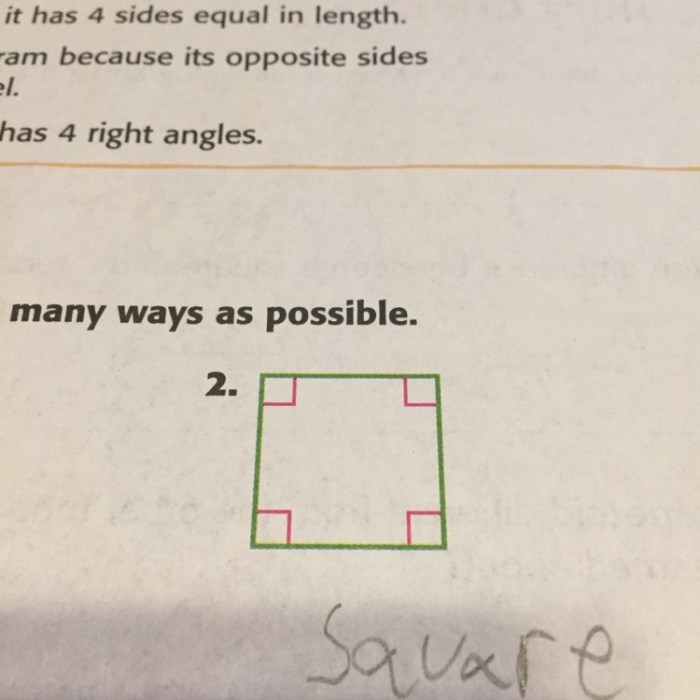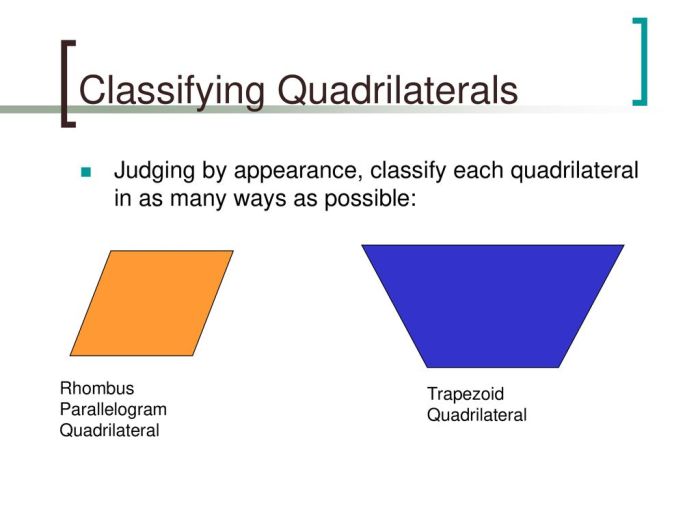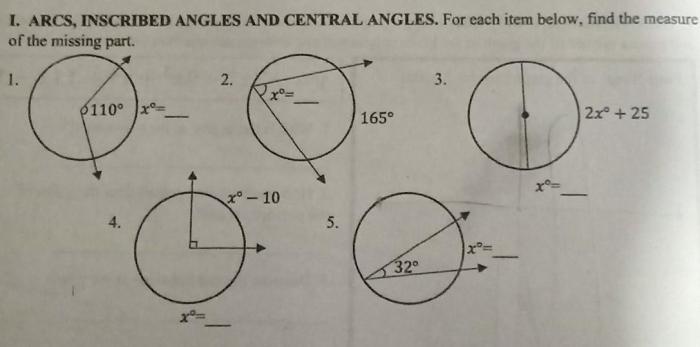Classify each quadrilateral in as many ways as possible, embarking on an intellectual journey that unravels the diverse characteristics of these fascinating geometric shapes. From their fundamental properties to their intricate geometric relationships, we delve into the captivating world of quadrilateral classification, unlocking a wealth of knowledge and practical applications.
Through this comprehensive exploration, we will illuminate the nuances of different quadrilateral types, unravel the intricacies of their properties, and uncover the geometric harmony that governs their existence. Prepare to expand your understanding and gain a profound appreciation for the multifaceted nature of quadrilaterals.
Types of Quadrilaterals

Quadrilaterals are two-dimensional shapes with four sides. They can be classified into different types based on their properties, such as the number of parallel sides, equal sides, and right angles.
- Parallelogram: A quadrilateral with two pairs of parallel sides.
- Rectangle: A parallelogram with four right angles.
- Square: A rectangle with all four sides equal.
- Rhombus: A parallelogram with all four sides equal.
- Trapezoid: A quadrilateral with one pair of parallel sides.
- Kite: A quadrilateral with two pairs of adjacent sides that are equal.
Classifying Quadrilaterals by Properties
Quadrilaterals can also be classified based on their properties, such as parallelism, perpendicularity, and diagonals.
| Property | Characteristics |
|---|---|
| Parallelism | At least one pair of opposite sides are parallel. |
| Perpendicularity | At least one pair of adjacent sides are perpendicular. |
| Diagonals | The diagonals of the quadrilateral have certain properties, such as being perpendicular or bisecting each other. |
Geometric Relationships within Quadrilaterals, Classify each quadrilateral in as many ways as possible
There are various geometric relationships between the sides, angles, and diagonals of quadrilaterals.
- Pythagorean Theorem: The square of the length of the diagonal of a rectangle is equal to the sum of the squares of the lengths of the two adjacent sides.
- Sum of Interior Angles: The sum of the interior angles of a quadrilateral is 360 degrees.
Applications of Quadrilateral Classification
Classifying quadrilaterals has practical applications in various fields, such as architecture, engineering, and design.
- Architecture: Quadrilaterals are used to design buildings, bridges, and other structures.
- Engineering: Quadrilaterals are used to design machines, vehicles, and other mechanical devices.
- Design: Quadrilaterals are used to create logos, posters, and other graphic designs.
Question & Answer Hub: Classify Each Quadrilateral In As Many Ways As Possible
What are the different types of quadrilaterals?
Quadrilaterals are classified into various types based on their properties, including parallelograms (having two pairs of parallel sides), trapezoids (having one pair of parallel sides), rectangles (having four right angles), squares (having four equal sides and four right angles), and rhombuses (having four equal sides).
How can quadrilaterals be classified by their properties?
Quadrilaterals can be classified based on properties such as parallelism (having parallel sides), perpendicularity (having perpendicular sides), and diagonals (having diagonals that bisect each other or are congruent).
What are the geometric relationships within quadrilaterals?
Quadrilaterals exhibit geometric relationships between their sides, angles, and diagonals. These relationships include the Pythagorean theorem, the sum of interior angles, and the properties of diagonals in different types of quadrilaterals.
What are the practical applications of quadrilateral classification?
Quadrilateral classification finds applications in various fields, including architecture (designing buildings and structures), engineering (analyzing forces and stresses), and design (creating aesthetically pleasing shapes and patterns).
How has quadrilateral classification evolved historically?
Quadrilateral classification has evolved from ancient geometry, with contributions from mathematicians such as Euclid and Pythagoras. Over time, classification systems have become more refined and comprehensive, reflecting advancements in mathematical knowledge.


